|
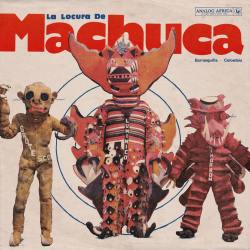
|
-
The story on how Rafael Machuca, a Colombia tax lawyer, came to own and operate Colombia's most eccentric record label is almost as odd as the sounds found in this collection. The tale goes something like this: Machuca was in charge of finding live music for a lawyers directors' party, and, having no clue how to search for traditional sounds, contacted his brother-in-law, Humberto Castillo, a record dealer in Medellin. Castillo traveled up country and helped Machuca find a variety of Barranquilla nightspots full of local talent that no one had thought to record. The long and short of all this is that Machuca, a man who previously had no interest in music, much less the music business, became infatuated with what he heard, joined one band on tour and ultimately used his tax knowledge to form a label with contacts and suggestions for musicians by Castillo. Out of this came a half decade of coastal Colombia's most outrageous psychedelic rhythms. Machuca encouraged single-takes, and at times, put together bands out of whoever was around, meaning some of these "groups" he recorded never existed outside of the one or two sides they waxed for the label. The music on La Lorcura de Machuca 1975-1980 is well-grounded in Cumbia and Vallenato, so its roots aren't obscured so much as decked out in glow-in-the-dark feathers and high-heels.
Read Bruce Miller's review and listen to a few tracks.
|

|
-
Cimarrón is a Colombian group playing llanero joropo music, the music of Colombia's north-eastern plains (los llanos). In October, they performed live from the river and savannahs in the Orinoco Plains. Watch the impressive full video (24 minutes) and read a short intro to their music by Andrew Cronshaw.
|
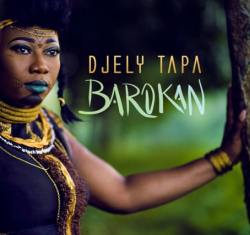
|
-
The term "Afro-Futurism," supposedly coined in 1993, but certainly put into practice philosophically and otherwise way before then, has been receiving much attention over the last few years. And it makes sense too. When a group of people- jailed, shot by police, denied fair housing, wages, or equity with regards to all manners of health and educational issues- finds itself systemically deprived of justice, a look to sci-fi and other ways to use the future as a way to escape the present is one logical reaction to various forms of oppression. The idea of space travel, both figurative and literal, is what fueled the music and writings of master bandleader, composer, and keyboard wizard Sun Ra... It only makes sense that Canadian-Malian artist Djely Tapa would embrace the term as a way to update griot traditions as a form of feminism. She has harnessed rhythms and stories at their root, but delivered them coated in dub murk and trippy electronics. Tapa grew up in Kayes, learning the music of the griots to whom she was related, all the while finding herself fascinated with Western culture. Eventually moving to Montreal to study Mechanical Engineering, she fell in with the cities massive African Diaspora and dug back into her griot-based roots. Eventually, she connected with Chadian-Canadian DJ AfrotroniX, who produced Barokan.
Read Bruce Miller's review and listen to some of the music.
|
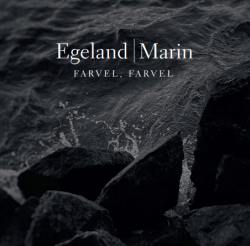
|
-
Dark, slow, intense, deep-pitched duetting, on hardingfele very unusually tuned an octave down, and electric viola similarly plunged to octave-low register, in 'sorrowful tunes to make your heart sing' - these are the melodies of songs, from living tradition, hymn-books and manuscripts, of sadness as melancholy as the plover's cry, love lost, farewell, the transience of life, and 'bottomless baroque mystery.' Norway's Ånon Egeland has a distinguished, open-minded and multifaceted career in traditional music and the inspiring communication of its skills and knowledge to new generations. Mikael Marin is the viola player with the very well-known Swedish trio – recently become a duo – Väsen. In live performances of this project the two of them, with grey beards and dressed in retro suits and hats, appear like ghosts from another time.
Listen to their collaboration and read Andrew Cronshaw's review.
|
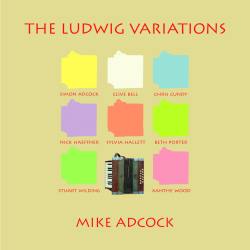
|
-
The Ludwig Variations is not, as one might expect from the title, a set of variations on the works of ol' Ludwig Van B (whose 250th birthday anniversary is this year). No, this Ludwig is a creaky, wheezy old small piano-accordion made by the German company Ludwig, and in these pieces its characterful sounds are augmented and celebrated by Mike Adcock and a cast of his pals responding to these pieces on a sympathetic range of other mainly acoustic instruments. Mike explains "In the early days of the Corona virus lockdown of 2020 I sat down one evening in my living room, my head full of thoughts about what the coming months might bring. I'd taken down from a shelf an ancient and rarely touched accordion, thinking to explore its charms, and began to improvise."
Hear the results of his experiments in Andrew Cronshaw's review.
|
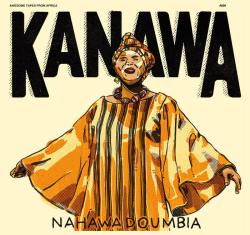
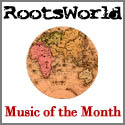
|
-
Nahawa Doumbia, a singer from Mali's extraordinarily musical Wassoulou region, has been releasing records for nearly 40 years. She's also been the focus of two other 'Awesome Tapes From Africa' releases, recordings that show off her voice over solo acoustic guitar as well as larger bands that combine traditional instruments with electric ones. With Kanawa, the label is releasing brand new music from this West Africa treasure... And not surprisingly, it induces surrender. Doumbia's voice has only gained power with age... Lyrically, she speaks to what she has been witnessing in her home country: the treacherous flights of young people to Europe, the struggle for Malians to find employment and build their own country, and a denouncement of the fundamentalist horrors that have ransacked the country's northern regions in recent years. Ultimately, she's arguing that leaving Mali works against the country's future, no matter the current issues.
Bruce Miller reviews the legendary singer's new album.
|

|
-
Young, largely city-based, musicians finding and learning from the old village players has created an upsurge of enthusiasm for, and dancing to, Polish traditional dance music, mainly its lurching, energetically fiddled mazureks (mazurkas). The playing, organising and teaching work of Janusz Prusinowski and his band have been a huge influence in this revival since the time of their first album in 2008. WoWaKin brings a further and very engaging burst of dance-impelling energy that I'm finding as enthusiasm-inducing as I did that first Prusinowski Trio album. All of the material on the trio's Wiazanka is traditional, much of it learned from living or recently deceased musicians from across lowland Poland who played for weddings, funerals and as village entertainers. While keeping all the traditional technique and instrumentation, WoWaKin have not only absorbed the essence but vitalize it with their own approaches.
Andrew Cronshaw reviews and you can listen in.
|

|
-
It's likely that this collection's existence makes little sense to anyone unfamiliar with Harry Smith or the original 6-LP Anthology of American Folk Music he curated, originally released by Folkways in 1952. Yet, if there's a soul out there somewhere who's just now tapping into this music via this comp, it will then get a chance to stand on its own as a collection of music recorded commercially and released on 78 RPM shellac discs in the US circa 1927-30. They will hopefully note that it isn't representative of what was popular at the time. Hell, it's not even representative of whatever 'American' is... Harry Smith was a collector - of Easter egg patterns, textiles, paper airplanes, and at one point, records. He also saw a pattern to the sides he decided to initially compile for the anthology. He mixed alchemy with academia to make choices, and as awesome as the original collection is, there are some clunkers, which means those clunkers' equally weak B sides appear here. So, both the original anthology, and this mirror collection are filtered by the commercial nature that allowed them to exist on record in the first place, and then again by a curator driven by the power of particular patterns as much as by the records' quality. Arguably then, the idea of a collection of B sides undoes Smith's vision. All that said, it's a wonder the music is as good as it is.
Bruce Miller digs deep into the archive. Listen with him.
|

|
-
Lo'Jo is one of those remarkable bands that's crafted a sound that's instantly identifiable. Five seconds and you know who it is. But rather than simply trade on that, they've used it as a springboard from which they can experiment. On each of their albums for more than 20 years, they've mutated and subverted many musical norms. They've tried things, brought in new ideas and instruments well before they became established in Western music. Transe de Papier is no different. The familiar elements are there: the poetic, gravelly voice of Denis Péan, the harmonies of the Nid El Mourid sisters, and the violin of Richard Bourreau, which often sounds nothing like an ordinary violin. That's the established core, along with relatively recent bassist Alex Cochennec, but it's how they use those pieces that illustrates the changes.
Read Chris Nickson's review and listen to some of the music and a video.
|

|
-
The story on how Rafael Machuca, a Colombia tax lawyer, came to own and operate Colombia's most eccentric record label is almost as odd as the sounds found in this collection. The tale goes something like this: Machuca was in charge of finding live music for a lawyers directors' party, and, having no clue how to search for traditional sounds, contacted his brother-in-law, Humberto Castillo, a record dealer in Medellin. Castillo traveled up country and helped Machuca find a variety of Barranquilla nightspots full of local talent that no one had thought to record. The long and short of all this is that Machuca, a man who previously had no interest in music, much less the music business, became infatuated with what he heard, joined one band on tour and ultimately used his tax knowledge to form a label with contacts and suggestions for musicians by Castillo. Out of this came a half decade of coastal Colombia's most outrageous psychedelic rhythms. Machuca encouraged single-takes, and at times, put together bands out of whoever was around, meaning some of these "groups" he recorded never existed outside of the one or two sides they waxed for the label. The music on La Lorcura de Machuca 1975-1980 is well-grounded in Cumbia and Vallenato, so its roots aren't obscured so much as decked out in glow-in-the-dark feathers and high-heels.
Read Bruce Miller's review and listen to a few tracks.
|

|
-
Cimarrón is a Colombian group playing llanero joropo music, the music of Colombia's north-eastern plains (los llanos). In October, they performed live from the river and savannahs in the Orinoco Plains. Watch the impressive full video (24 minutes) and read a short intro to their music by Andrew Cronshaw.
|

|
-
The term "Afro-Futurism," supposedly coined in 1993, but certainly put into practice philosophically and otherwise way before then, has been receiving much attention over the last few years. And it makes sense too. When a group of people- jailed, shot by police, denied fair housing, wages, or equity with regards to all manners of health and educational issues- finds itself systemically deprived of justice, a look to sci-fi and other ways to use the future as a way to escape the present is one logical reaction to various forms of oppression. The idea of space travel, both figurative and literal, is what fueled the music and writings of master bandleader, composer, and keyboard wizard Sun Ra... It only makes sense that Canadian-Malian artist Djely Tapa would embrace the term as a way to update griot traditions as a form of feminism. She has harnessed rhythms and stories at their root, but delivered them coated in dub murk and trippy electronics. Tapa grew up in Kayes, learning the music of the griots to whom she was related, all the while finding herself fascinated with Western culture. Eventually moving to Montreal to study Mechanical Engineering, she fell in with the cities massive African Diaspora and dug back into her griot-based roots. Eventually, she connected with Chadian-Canadian DJ AfrotroniX, who produced Barokan.
Read Bruce Miller's review and listen to some of the music.
|
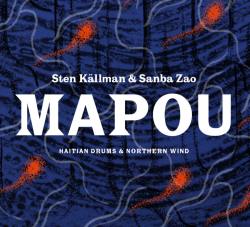
|
-
Some may fondly remember the stringy, reedy swingy halling/polska honk of Filarfolket, a prime and now legendary band in the Swedish folk music revival. Mapou often evokes that swing. Pairing ex-Filarfolket saxophonist Sten Källman on baritone, tenor and soprano with Haitian voudou drummer Sanba Zao, it draws on Swedish and Norwegian traditional halling, polska, waltz or springlek and Haitian melodic rhythms.
In music of just reeds and drums, plus touches of brass, with no chordal instruments but rich with implied and actual harmony, they're augmented by two more Haitian percussionists, bass clarinettist and soprano saxophonist Robin Johansson and, on a few tracks, a bunch of Swedish reeds and brass players. The resonant and gutty patter and pitched ring of the drums creates a rhythmic and melodic world, over and within which the reeds float and weave their own melodies, softly solo or in thicker ensemble.
Andrew Cronshaw reviews and presents some of the music.
|
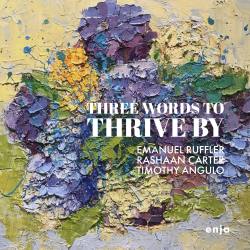
|
-
Three words to thrive by is as interesting for its uplifting jazz music as its is for the creative process behind the album. The trio of Emanuel Ruffler (piano), Rashaan Carter (bass) and Timothy Angulo (drums) starts off with discussions that becomes ideas, that then inspire them to make music.
"This trio is born of conversation. It's origin, thought and dialogue is rooted in listening, sharing, and learning. We've developed a fairly regular routine in which a discussion precludes and completes a rehearsal or a recording. We've developed a trust that ushers these exchanges through a wide range of ideas and topics. These conversations forms the core of the music," explains pianist Ruffler.
Their first single, "Jazz Dakar" was released on the 30th of October and was born after all three went to West Africa, where they were deeply touched by the history of slavery. The Gospel singer and activist, Valerie Troutt completes the piece with a melody originally meant for a horn. Troutt's voice has similarities with Anita Baker's and it is hard not to wish for more.
Read Maria Ezzitouni's review and hear some of the music.
|
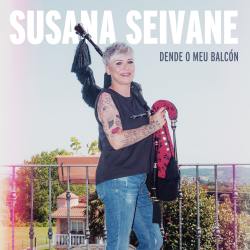
|
-
Twenty-one years ago I reviewed Galician gaiteira (bagpiper) Susana Seivane's first album, a sparkling production of arrangements in which she was accompanied by a bunch of leading musicians in the upsurge of energy in Galician traditional music. For her sixth album Dende O Meu Balcón ('From My Balcony'), she has returned to her traditional Galician roots, in classic tunes and songs, with the raw gaitas and percussion and strong melodies. Hear some of the music and read Andrew Cronshaw's review.
|


|
-
First, please join me in learning a little about the Walloon Region, a place and a culture in southern Belgium that shares borders with Flanders (Belgium), France, and Germany. Wallonia is the poorer cousin of Flanders and Brussels, economically and politically, but covers a bit more than half of the country's territory. Its residents speak their own distinct Romance language, Walloon, as well as French. Perhaps most descriptive is that the name itself is rooted a Germanic word meaning "the strangers"?
Gote d'Èwe opens with what seems to be an electronic wind but it quickly becomes clear it is human breath. This breathing is overlaid first by a single female voice, then a full chorus, creating a rhythm and a polyphonic melody... La Crapaude (the girlfriend, in dialect) are joined by rough, simple percussion instruments. They immerse you in the wonders of the Walloon tradition, sung not as traditionalist re-creation, but as living contemporary vocal music. Charlotte Haag, Sabine Lambot, Pascale Sepulchre and Marie Vander Elst, accompanied by percussionist Max Charue, delve into the folk tales of Wallonia and present them in rich harmonies, punctured by hands clapping, sticks clacking. Hear more and read Cliff Furnald's full review.
|
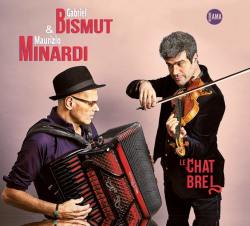
|
-
The playfully named Le Chat Brel is an arresting mélange of music inspired by a number of post-War and mid-century cultural trends, mostly in France and Italy. In essence it is the story of two ships, one laden with an accordion on deck (and a piano in storage), the other carrying a violin and viola, that set sail from Franco-Italian harbors, bumping from performance to performance in ports mostly European. They would pass each other like the proverbial ships in the night until their captains came to see that they rode kindred waves, and a bond between them was cast. Maurizio Minardi, master of the keys, and Gabriel Bismut, master of the strings, are the two seafarers who vaunt their affinities on the album.
The curious title gives us a hint as to some of these affinities: "Chat" and "Brel," when combined might bring to mind Claude Chabrol, one of the signature directors of the French Nouvelle Vague, groundbreakers in cinematic technique and engaged in social commentary. And Brel, of course, suggests the much venerated Francophone singer-songwriter, poet and gallant of Paris's Bohemian set, Jacques Brel.
Read Carolina Amoruso's review, listen to some of the music and watch two videos.
|
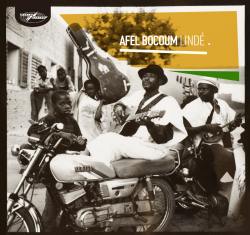
|
-
The gifted, unassuming Malian singer-guitarist Afel Bocoum is internationally known as a member of the band of his late mentor Ali Farka Toure and more recently, his work on Damon Albarn's Mali Music and Africa Express projects. But it's Bocoum's reflective solo recordings which I think show him in the best light. So I approached this new release, with its clutch of guest artists and promised combination of tradition and innovation, with a degree of caution. Bocoum wouldn't be the first traditionally inclined artist to end up drowned in a stodgy soup of well-intentioned overproduction. Turns out I needn't have worried. Lindé may have flash, dash and big-name cameos, but at the heart of every track is the easy rolling West African rhythm and melody of Bocoum's sound.
Listen in with Jamie Renton
|
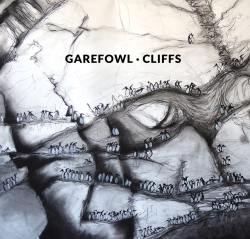
|
-
Garefowl was the name given to the Great Auk, a bird prized for its down and eventually hunted to extinction. In 1840 the last Great Auk of St. Kilda - the remote Scottish archipelago at the westernmost tip of the Outer Hebrides that was abandoned 90 years ago - was killed by an ancestor of Ewan Macdonald, the man who is one of the driving forces behind this album. Cliffs commemorates both events.
Most of the pieces draw on music collected on St. Kilda or recorded later by those who had lived there. Others, composed for this album, find their inspiration within the grater orbit of St Kilda and its history: family stories, journeys on the water, or a glimpse of someone on the street. Recorded during lockdown, with the North Atlantic water and air and the cries of the birds as the backdrop, it's an original, thickly-textured, thoughtful and sometimes profound piece of work. It's slow music, that develops like waves moving gradually from the deep to the shore. It envelops all the senses and emotions, taking its time to build and swell then recede again. Read Chris Nickson's review and hear some of Garefowl's music.
|
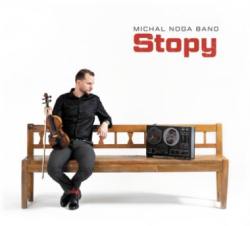
|
-
Some musicians involved in folk music release an album as soon as they have the ability, repertoire and resources. Other spend many years playing with and learning from tradition-bearers living and passed, and build a reputation before committing to their first release, and when they do it's well worth paying attention.
Fiddler Michal Noga is of that latter category. Michal's playing is top-class, impeccably accurate and full of lightness and energy, and on Stopy he is accompanied by a band of fiddle, kontra, cimbalom and double bass. All of them sing, and they're joined for the album by male and female solo and group singers and, for individual tracks, extra instrumentalists including clarinet, sax and double-chanter bagpipe. There's a nice conceptual feel to the way the music is presented, that alludes to this being youngish present-day musicians paying tribute to the musicians and bands who have carried the traditions. Read Andrew Cronshaw's full review and listen to the music.
|
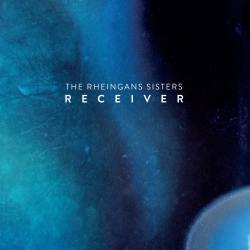
|
-
It is hard to believe that the Rheingans Sisters were ever anything as straightforward as a folk duo. Over the course of four albums they've developed into a duo with strong roots and influences in folk traditions, who compose and play music that's far more amorphous and beyond easy definition.
"We have a strong sense of the atmosphere we want to create in our music - the colours, textures, the feel of each track being of equal importance to us as lyrics, melody, arrangement…We're also quite influenced by musical styles where this is apparent - the trance like qualities of some traditional dance music has always attracted us as well as the pattern making repetition of classical minimalism."
That trance, the sense of transport, seeps through on much of the music on Receiver. It is a very textured album. It can be very beautiful at times, rough and ready at others. It's most definitely not polished to glossy perfection. Read Chris Nickson's full review and listen to some of the music.
|
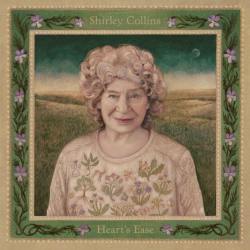
|
-
Andrew Cronshaw writes:
At the end of the 1960s I was given a present of Shirley Collins' The Power Of The True Love Knot. To be honest, I wasn't immediately all that attracted by her singing – it seemed conversational, unlike the more projected singing I was accustomed to in the folk scene music of the time. But that's precisely it; Shirley sings a song to you, she tells it, and the songs and their melodies from that LP lodged in my mind.
After a long hiatus, she returned in 2016 with Lodestar. And now, we have Heart's Ease.
Her voice is deeper, but it still has that warmth, like she's telling the song just for you. Not commercial-type close-mic breathy intimacy, it's much earthier, and she sounds like family. And there's that rounded, natural Sussex accent.. The accompaniments, too, have changed; they're more string-bandy, featuring the Lodestar Band of Ian Kearey, Pete Cooper, Dave Arthur, Pip Barnes and Ossian Brown, variously on 12-string guitar, fiddle, banjo, guitar, mandolin, bass, melodeon, electric guitar, hurdy-gurdy, and Ian also plays Shirley's erstwhile instrument, a cittern with 5-string banjo neck and a heart-shaped sound hole.
Read Andrew's personal reminiscences and short bio, and his full review of the album, accompanied by a number of songs.
|
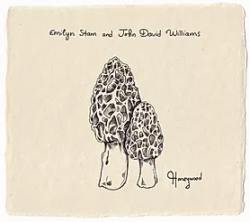
|
-
Honeywood is hardcore dance music; no ifs, ands, or buts. It's serious dance music. It satisfies the feet and it also does a very good job on the heart. But no programming, no 808s. This is all acoustic, played by the Ontario duo of Emilyn Stam and John David Williams who often manage to sound like a quartet or more, even without guests, as they roll out the melodies on accordions, clarinet and five-string fiddle. Alongside their own material, there's plenty from the tradition to sit alongside on their second release. But the devil is in the arrangements. They're more than complex, built of the kind of natural empathy that can only come from a couple who live and breathe their music together, 24 hours a day.
Read Chris Nickson's review and dance to some of the tunes.
|


|
-
"Some of my biggest influences were people like Louie Armstrong, Professor Longhair, Dr. John, Jackson do Pandeiro, Luis Gonzaga, Chico Science. If those artists were alive today and we put them in a studio and recorded an album, what would it be? That was the inspiration," says drummer Scott Kettner. When Nation Beat released its first album in 2005, the shorthand description of their sound usually was that it was a pairing of American country music with the Brazilian country music from the northeast. On the second, 2008's Legends of the Preacher, the band reimagined Hank Williams "I'm so Lonesome I Could Cry" with a Brazilian syncopated beat, but the other cuts on the album were literally all over the map, touching on funk and soul too.
The Royal Chase now features Kettner on percussion and four brass players. The title of the new album hints at what has been going on with Kettner. "I'm always chasing something and I don't always know what it is, but it drives me. It makes me practice and keep recording albums. I never feel like I've completed it….I'm trying to get to something and that's my royal chase."
Marty Lipp talks with Kettner, and reviews Nation Beat's latest album.
|
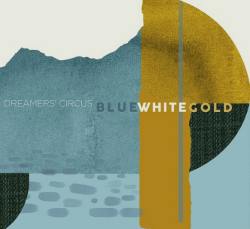
|
-
What do you do after you've celebrated 10 years together as a band? How do you keeping going and still have it sounding as fresh and new as it did at the start? There's no easy answer, of course. And when Dreamers' Circus recorded Blue White Gold in 2019, nobody could envision what 2020 would become. Yet, unwittingly, they seem to have made a CD that fits perfectly the times in its mix of beauty, jauntiness and hope.
Chris Nickson wakes up to the striped down sound of this wonderful Copenhagen-based ensemble.
|
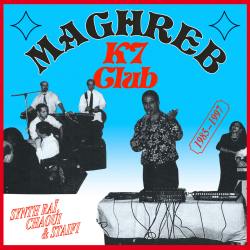
|
-
Waves of Algerians have been making France home for over 100 years now, escaping regressive Algerian politics or in search of better work opportunities. Whatever the case, it makes sense that the home of the colonizer would include among its population thousands of people representing the (formerly) colonized. Cities such as Paris, Marseilles, and Lyon have the largest concentrations of North Africans, and despite the racism these folks have felt in this country, they have been re-defining French culture for decades. Algerians are French, so it's natural that these cities became the focal points for musical recordings such as the tracks collected in Maghreb K7 Club: Synth Raï, Chaoui & Staifi 1985-1997, all of which are the product of Maghrebis living in Lyon. This collection allows tracks initially produced on cassette in the Guillotiere district of Lyon by the musicians dominating the area's scene at the time their first vinyl release. In fact, this place had been a hub for Algerian culture for years, so there was something of a musical synthesis taking place, which helps account for the wide-ranging styles here. Because, while the term Rai is often used to represent much late 20th-century Algerian pop, there's more to it than this.
Delve in to this unique collection with Bruce Miller.
|
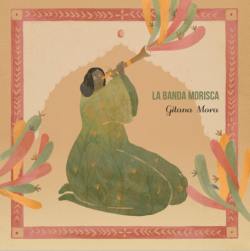
|
-
The third album of the Andalusian sextet La Banda Morisca retains much of the flavor of the group's first two discs, while moving the band's sound forward into new territory. Informed by the traditions of old Al-Andaluz, the longest-Islamicized region of Spain which also maintained long standing ties with the Middle East, the Maghreb and other parts of the Mediterrranean and Africa, their new disc is quite well polished for a global audience. While the Arabic influences on Spanish music are obvious, La Banda Morisca makes the connection explicit, following on the success of Andalucia's Radio Tarifa and such Valencian singers such as Miquel Gil and Carles Denia. Read David Cox review of Gitana Mora.
|

|
-
The music on this disc resides in a place many would consider either anti-science, or at the very least see as the type of woefully ignorant occurrence that happens when modern medicine isn't as readily available as it should be. Certainly, in Northern Malawi, one of the poorest places on earth and also where these performances were recorded, Christians, themselves espousing the often-dangerous beliefs of the colonizers, see what's on offer here as an embarrassment. Yet, with the continued existence of these types of performances come places to have conversations about cultural preservation, resistance, and music and dance as therapy and performance as art. Consider the fact that Music Therapy is a clinical, evidence-based science in the west. Vimbuza, the music and dance on offer on this collection, tends to occur at night and at least in this area, under the leadership of Doctor Kanuska, who is a well-respected figure in the villages of the Northern Mzimba region.
Read Bruce Miller's review of Mutende Mizumu by Doctor Kanuska Group.
|
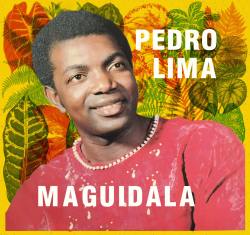
|
-
There was no more radical shift in production and/or styles in popular music than the jarring lurch that happened in many parts of the globe at the dawn of the 1980s... For lovers of buoyant, body moving, raw guitar-based music everywhere, Sao Tomé and Principe were still churning out the heavy stuff as late as 1985, as this collection of extended rhumba and puxa jams so emphatically demonstrates. A companion to Bongo Joe's recent compilation from these islands, and featuring a single artist and only 4-extended tracks long, Pedro Lima's
Maguidala is perhaps even more consistent than its predecessor. Lima, who died in 2019 at the age of 74, had been gigging with bands since he was a teenager, including his family band Os Leoneses. His voice conveys a subtle warmth over simmering, intertwining guitar patterns for a sound that might be mistaken for anything from soukous to benga. But what's on offer here doesn't quite sound like anything else from the time or region...
Read Bruce Miller's review and listen to 2 tracks
|
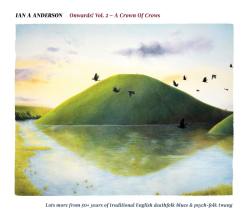
|
-
Veteran English musician Ian A. Anderson has made good use of lockdown... This second decades-spanning compilation takes in most facets of his musical interests, with a number of cuts appearing on CD for the first time, like the possibly apt-for-the-times "Another Normal Day" from his Hot Vultures years, a song that bounces into the brain... What's so refreshing is that the quality is high throughout – no barrels scraped here, not even close - which makes you wonder how much more excellent music he has hidden away in his cellar.
Read Chris Nickson's review and hear some of the music.
|
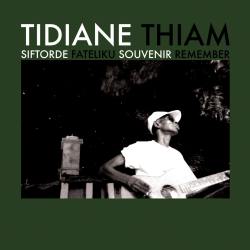
|
-
Bucking the trend for brash West African desert rock and blues (Tinariwen and their ilk), this solo debut from Tidiane Thiam offers an altogether gentler kind of guitar music from the region. The album's title translates as "Remember," most apt given that many of the melodies here can be traced back as far as the 11th Century. Thiam, who is a photographer, visual artist and folklorist as well as a guitarist, is eager to keep alive the traditional sounds of northern Senegal. Recorded in his riverside hometown of Podor, the country's northern-most outpost (the last stop before Mauritania) Siftorde shows how simple is sometimes best.
Read Jamie Renton's review and listen.
|
Support RootsWorld. Subscribe to Music of the Month.
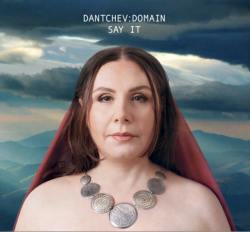
|
-
"The simple fact is that I love brass instruments and percussions," says Anna Dantchev about the configuration of instruments on her new work with her band, Dantchev:Domain.
Say It painstakingly places and moves sounds about to express a mood, a feeling, a memory, like the pieces on a chessboard, locked in harmony instead of battle. Dantchev's compositions, her vocals, and arrangements combine to craft an audio memoire using intriguing instrumentation, that creates a sometimes solemn and martial sound defined by the deep brass of sousaphone, tuba and trombone. Dantchev's voice, too, is brassy and round with a slight bell-ringing vibrato. Percussionthe battery includes a drum kit, an assortment of individual drums and small percussion instruments, and Dantchev's tupan, a traditional Bulgarian, two-headed drum complements the brass to create an unusual, yet successful coupling that achieves a big, though tempered, sound. Key to taming that brashness is the frequent intercession of guitar and vibraphone.
http://www.rootsworld.com/reviews/dantchev-20.shtml
Carolina Amoruso shares her thoughts on the music.
|


|
-
From Honduras, singer Nohelia Sosa intertwines her evocative alto with the discreet backing of her band, Sus Santos: guitarist Randy Sanchez, bassist Justin Bransford, and singer-songwriter-drummer-percussionist Rafael Herrera. They convene fluently where Latin folkloric, pop, canción romántica and rock en español meet R&B, C&W, and rock 'n' roll. The consequence is a fluent hemispheric sound attuned to the changing demographics, diversifying complexion, and hybrid vitality of artistic expression north of the Rio Grande, not a line of division or great wall, but an embracing cultural bridge linking with, indeed celebrating what the Americas may yet become.
Read Michael Stone's full review of Nohe & Sus Santos' Tempestad and listen to some songs.
This is our Music of the Month selection for July, 2020. Subscribe, or get just this CD, and support RootsWorld with your donation.
|
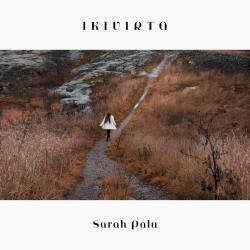
|
-
Although Sarah Palu has made a name for herself as a film composer in Finland, and plays in a few bands, this is her debut as a solo artist, and on it she's set the bar incredibly high for the future. While plenty of albums are tucked away after a week or two, this one sticks around and practically demands to be played, its nooks and corners are slowly discovered. Palu is primarily a kantele player, but she hardly defines by it. There's an emphasis on strings, but the music she's written, played by herself and several others, flows rapidly and easily across stylistic borders. Not folk, not dance, not world. About all you can say is that it's always decidedly Northern.
Read Chris Nickson's review and listen to some music.
|
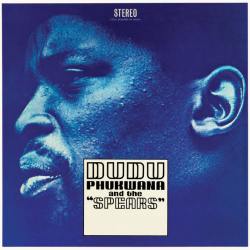
|
-
Before Matsuli became a record label, it was a blog doing hungry music fans a solid by posting mp3s of live gigs, rare, out of print LPs, and generally being among a flurry of online activity then equipping folks such as myself with African sounds we either never thought we'd hear, or never knew existed in the first place. Matt Temple, the man behind the label, which kicked off in 2010 and focused on 1970s South African reissues, shined some much needed light on little known artists and styles, and the goods keep coming with three new albums this summer by Dudu Pukwana, Busi Mhlongo and Zorro Five. Read Bruce Miller's review of all three and listen to a track from each.
|
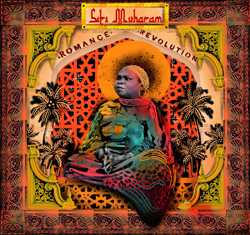

|
-
Siti of Unguja (Romance Revolution on Zanzibar) is a tribute to a pioneering woman artist, Siti Binti Saad (1890-1950). It celebrates, amplifies and updates the ages-old genre of music unique to Zanzibar, taarab. Remarkably, Siti Binti Saad was able to wrest taarab from the province of men only, appearing as a lead performer who opened the way for other Zanzibari women musicians. Remarkably, too, she introduced lyrics to her songs that addressed the exploitation of women, classism and corruption.
What makes this both a tribute to the past and a compelling contemporary playlist goes beyond the music itself and the masterful arrangements: for the first time we hear the voice of Siti Binti Saad's great-granddaughter, Siti Muharam. Siti Muharam had lived for many years silently on Zanzibar with her fabled legacy, until she was coaxed into recording her great grandmother's repertoire. Listening to Muharam is like opening and savoring the flacons of a collection of precious Zanzibari spices; each song, each instrument and player, has its own flavor, while together they create a dreamy bouquet, an East African garam masala. Hear some of the music and read Carolina Amoruso's full review.
|
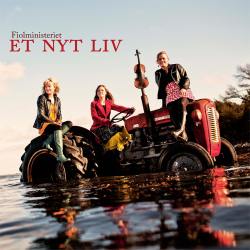
|
-
The members of Fiolministeriet (The Ministry of Fiddles) have all been busy, but it's taken than nine years to finally getting around to follow-up to the eponymous debut and we barely bat an eyelid. Still, they've returned with the outstanding Et Nyt Life, and it really does sound like a rebirth; straight out of the traps it's full of passion. On "Riga Balsam" you can hear the raw scrape of bow on string and almost feel the texture of the wood. Even in the interlacing of its slower, delicate middle section that earthy sense remains. It's a powerhouse beginning to an album, the execution joyful and full-blooded...
Read Chris Nickson's full review and listen to the music in RootsWorld
|
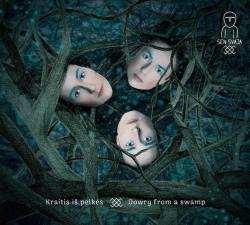
|
-
The three Lithuanian women who make up Sen Svaja claim to possess origins of pixies. While that intriguing idea of their ancestry may or may not be true (who can be certain in the Baltic or Nordic countries?), there's certainly some dark magic about the music they make on Kraitis Is Pelkes. The title means 'the dowry from the swamp,' and it's filled with riches from across Europe; mostly their homeland, but some songs have their beginnings as far away as Turkey, Britain, and Norway. "Ralia Rolia" sets the tone for the disc, a shepherd's song that seems to be steeped in shadow: there's an insistent zither riff, some brooding bass – the subtle programming complements the arrangement – and the very eerie mix of the three voices. It really does contain something of the otherworldly. Maybe not a swamp, perhaps a portal hidden in slab of rock that leads to a stranger world... Chris Nickson takes you into this strange place.
|
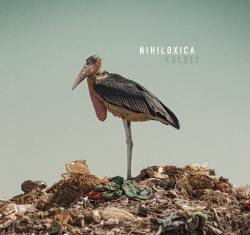
|
-
The sextet Nihiloxica - featuring two Europeans on kit drums and electronics, and four Ugandans who live and play traditional hand drums in Kampala as the Nilotika Cultural Ensemble - is named after the giant Marabou storks found in much of sub-Saharan Africa. These birds, nearly as tall as people, ugly and menacing, are scavengers on the ground but graceful in the air. None of this describes this band, though like the Marabou stork, Nihiloxica thrive in Kampala and elsewhere... Kaloli should surprise no one who's heard the band's earlier releases. Perhaps the sounds are bit less jagged in their force, but the dark, wasteland-washes of synth never disguise this as music to get physical with. Its primary concern is equal parts dance and trance, something percussion ensembles all over the African continent honed to perfection centuries ago. In that sense, Nihiloxica perform an update on ancient ritual that connects them equally to contemporary artists and to a variety of age-old regional Ugandan drum styles.
Listen in, and read Bruce Miller's review.
|

|
-
The third full-length CD from Estonian band Trad. Attack! finds Sandra Vabarna (vocals, Estonian bagpipes, Jew's harp), Jalmar Vabarna (12-string guitar, vocals), and Tõnu Tubli (drums, percussion, trombone, glockenspiel, vocals) firing on all cylinders. Make Your Move is a fierce and fearless treatment of traditional material, and in this surreal time of worldwide pandemic, you do not want to miss this album. Since 2014, Trad. Attack! have been focused on updating the sound of Estonian folk music. The band has always exuded a feeling of joy and playfulness, and they do not shy away from pop gloss, the dance floor, or fully utilizing the recording studio to realize their vision. Each album has opened up new routes for Trad. Attack!, and Make Your Move is full of strong musicianship, electronic flourishes, and punk energy.
Lee Blackstone rocks out in Tallinn.
|
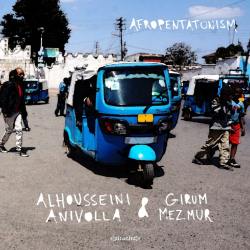
|
-
Collaborations between musicians from seemingly disparate cultures or geographically distant places are certainly nothing new; they also often serve more to show listeners what these ostensibly dissimilar cultures actually have in common, as so much music is coincidentally or otherwise connected by instrumentation, tone, or rhythm... Yet, the musicians on Afropentatonism are from a different version of the typically problematic terms "east" and "west," in this case Niger and Ethiopia, both landlocked African nations with undeniably rich music scenes that have received more global attention over the last 20 years. Guitarist Alhousseini Anivolla is known for his work with Etran Finatawa, while Girum Mezmur, a musical chameleon, tends to lend his six-string energy to western-derived soul-jazz fusion all the while doing a huge part to keep Addis Ababa's fertile musical scene chugging along. Because Mezmur, who has been on the scene for closer to 30 years, can be found playing in any number of styles, it's not surprising that he bends to compliment and comment on his West-African partner's grooves here for music that fits right into the single-chord hypnosis Tuareg desert guitar is famous for invoking.
Read Bruce Miller's review and listen to some of the music
|
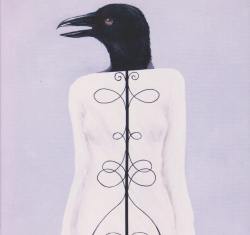
|
-
Back around 2006, I was a fortunate guest at what might have been the world's first streaming festival, with two full nights of Danish roots music. One of the performers was Eivør, who took to the stage solo and put on a mesmeric performance that sometimes became shamanic. By that time the Faroese (Faroe Islands are part of Denmark *) singer-songwriter had made a name for herself, building a career that had seen her working with Canadian guitarist Bill Bourne, winning awards and becoming almost a household name in Iceland. Krákan, arriving in 2003, when Eivør was just 20, predates any of those strains of fame, is an accomplished second album that comes from a period of great and glorious experimentation, backed by drums, guitar, and bass. Just reissued, it's a chance to look back at an album that is not only adventurous, but a bit of a masterpiece.
Chris Nickson looks back and shares some of the songs.
|
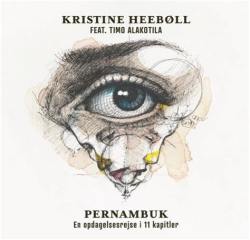
|
-
Pernambuco (the hardwood often used to make violin bows), by the duo of Danish fiddler Kristine Heebøll and Finnish pianist Timo Alakotila, had its genesis in a session three years ago at a music composition camp.
"We started jamming one night, first traditional tunes and tunes we both knew, but after a while I threw in one of my own tunes and what came out of Timo's hands was just like a dream!" Heebøll recalls. "It was exactly the kind of accompaniment and music that had only existed in my head."
That interplay and lyricism is evident from the very first notes. The flow from fiddle to piano and back again is seamless and utterly natural, almost telepathic, a dance as the instruments weave in and out and around each other.
Read Chris Nickson's review and hear some of the music.
|
Support RootsWorld. Subscribe to Music of the Month.

|
-
Estonian artist Mari Kalkun has been a long time favorite artist of mine. She has worked solo and with ensemlbles, including the great Finnish group Runorun. She uses poetry and songs from Estonian history, amplifies them through her own moderd lens, and produces some of the strongest Baltic music out there. This concert was recorded live in her apple orchard, with piano, zither and some light electronics to accompany her voice. Her topics are life, love and above all, her passion for the natural world. - CF Watch and listen to this live performance.
|
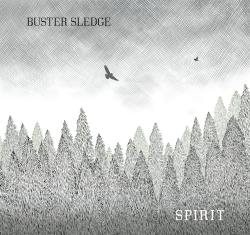
|
-
Buster Sledge is supposedly a bluegrass album made in Norway by a curiously-named trio, but the fjords don't seem to echo with too much of the high lonesome. American fiddle player Michael Barrett Donovan teamed with a Norwegian banjo player and guitarist and the odd result ranges from the countrified to the very strange (maybe not deliberately, though), although there is a nod towards Bill Monroe's sound.
Read Chris Nickson's review.
|

|
-
"It's about 1 AM, in a small shiny modern cocktail bar in Oslo in 2007, during the folk music expo Folkelarm; an informal gathering before the showcases begin the following day. The chatter subsides as a striking, craggy-featured, long-black-haired character with a circular frame drum takes a seat in a corner, and begins a most extraordinary performance, riveting in its intensity as he emits guttural vocal sounds to the thud of beater on drum, his head close to its skin. Torgeir Vassvik is Sámi, a coastal Sámi from the village of Gamvik on mainland Norway's northernmost tip, and it's Sámi joik, but not like any I've heard before."
Read Andrew's review of Vassvik's latest recordin Gákti, as well as some background on the Sami people and music in the modern era.
|
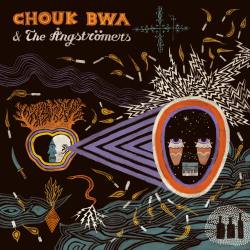
|
- Gonaives is an important Haitian city for many reasons; it's the point where Haiti's fight for independence began in the early 19th Century. It's also long been the heart of the country's Vodou practices- hurricanes, coups, and dictators notwithstanding. There are three temples, all continuing to practice different strands of vodou with links directly to Dahomey and the practice's West African origins. This is a tradition, encompassing medicine, religion, music, and trance, that has been demonized cartoonishly by Hollywood and the West in general, as one more way to make black people seem either scary or primitive. Or both...
Chouk Bwa, whose hometown is Gonaives, since their 2012 inception, they've used drum and chant-based sounds to help people heal from hurricanes that have ravaged Haiti over the past 12 years, or to simply comment on vodou's scarcity. As a result, they are aware of their own importance. Vodou Alé, recorded in Brussels in 2018 with Belgian electronic duo The Angstromers, applies dubby, hefty electronics to Chouk Bwa's basic grooves, and the results are hypnotic on their latest recording, Vodou Alé.
Read Bruce Miller's review, listen to some songs and see a live performance video.
|
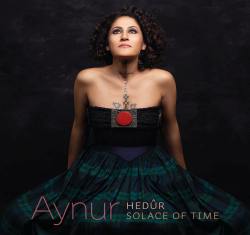
|
-
The seventh studio album from singer and composer Aynur Dogan finds these ears at a time when both physical and metaphysical distances have beset the world with unprecedented force. In such a climate, we seek humanity in every possible form, and hold on to it dearly for fear it might slip away, get trampled on in violent protest, or be silenced by the ignorance of pride. Hence the title Hedur, a word in her native Kurdish, referring to that moment of solace when spatiality and temporality become one in the self. Aynur makes a compelling and organic case for song as one viable way of achieving said solace, and does so by means of a voice that thrives on building bridges from one soul to another.
Tyran Grillo delves into the complex stories and music of Hedur: Solace of Time.
|
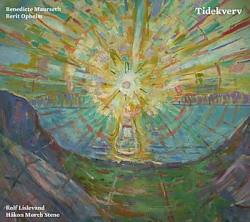
|
-
Tidekverv ('Timeturning') is a lush, spare, and emotional project envisioned by Norwegian Hardanger fiddle player Benedicte Maurseth and vocalist Berit Opheim. They are joined on this recording by Norwegian musicians Rolf Lislevand (lute, electric guitar, and electric bass) and Håkon Mørch Stene (percussion, vibraphone, and slight and sensitive electronic accompaniment).
Thematically, Tidekverv is one piece in honor of the sun. Maurseth's vision for the performance was rooted in the medieval ballad 'Draumkvedet,' which recounts the passage of Olav Åsteson as he falls asleep on Christmas Eve and his awakening on the twelfth day of Christmas... A passage through time is key to the work, whose rhythm is punctuated by the four days of the year most associated with the sun.
Read Lee Blackstone's review and listen to the music.
|
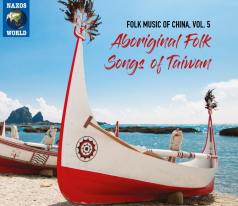

|
-
I'm guessing most people, even those with considerable knowledge of the musics of the world, listening to Aboriginal Folk Songs Of Taiwan with no information, would have no idea where it's from... These aren't any kind of scratchy archive recordings; they were made in May 2014... Given that often people's view of Chinese music is principally of Chinese classical music, particularly the instrumental music of such as guzheng, pipa, erhu and flutes, it's very good indeed, and extremely enlightening, to have series that delves into the living village musics of this huge country, which is such a patchwork of different peoples whose cultures and music survive despite the dominance of the Han people (who make up about 92% of China's population and are the world's largest ethnic group). And it's particularly good that the very striking regional folk singing traditions of its estranged neighbour Taiwan are included.
Read Andrew Cronshaw's extensive review and listen.
Aboriginal Folk Songs Of Taiwan is our June selection for Music of the Month. Find out more and subscribe.
|
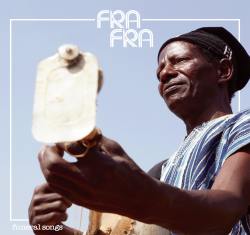
|
-
I was fortunate enough to spend a few weeks at the end of 2004 immersed in the complex, drum-focused Ewe culture, thanks the generosity of the chief of a small village - Anlo-Afiadenyigba - in the Volta Lagoon near Keta, deep in southeast Ghana. And aside from attempting to learn how to play the music, I was able to witness the local drum troupe, record their performances and rehearsals, and travel into the mountains with them for funeral rites. In fact, if one wants to hear this most radically intense drum-and-dance collaboration, funerals are often a good place to find it. For while Ghana's cultures and languages shift from rural to urban and north to south, how they celebrate death with music can be found all over the country, as well as in the countries of their immediate neighbors... And the spirits know that right now, the world is experiencing death, thanks to covid-19. Which all makes Fra Fra- Funeral Songs The Fra Fra live in the North of Ghana. While the sounds they make may seem worlds away from the polyrhythmic assault that is Ewe drumming, the idea behind funeral celebration is the same...
Read Bruce Miller's full review and hear the music.
|
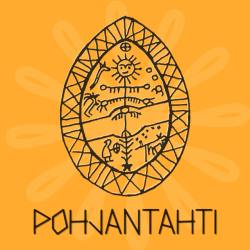
|
-
The Finnish trio that made up Pohjantahti released their self-titled debut in 1986, an LP of tremendous weirdness, based – perhaps inspired is closer - on the music of the Finno-Ugric nations, and also their own compositions which referenced the Kalevala, the Finnish national myth. With Sami joiking and overtone singing, it's not an easy listen – the vocal opener, "Hyyperö, Huuhkana, Kuihkamo," is about as accessible and inviting as Lou Reed's Metal Machine Music, and at times the disc becomes disturbingly stranger than that. However, there are glimpses of light, like "Haapana Uni," which offers a poignant, mournful melody, and "Kynnel Putoaa" a track that sounds as if it's wandered away from a 70s prog album. At its core, though, this is a daring experiment that was possibly far ahead of its time. Or possibly any time. Reissued 34 years later, does it seem more in tune with the world? You'll have to decide. - Chris Nickson
Listen for yourself.
|
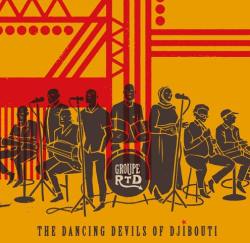
|
-
Since 1977, Djibouti has been under single party rule, and music is run entirely by the state, which means bands are all naturally part of state propaganda. Yet, this has not meant a lack of creativity or expression; rather, it's merely kept the rest of the world from getting their hands on it. Yet, hours of Radio & Television Diffusion Djibouti (RTD) video clips, including music are readily accessible on Youtube, so it's not like one can't find vintage performances of, say, Fadumo Ahmed with a quick Google search. What this has meant as that no one has been able to secure an international release of music from the country, much less a visit into the archives. Until Ostinato paid them a visit in 2019, that is. Aside from getting to dig deep into RTD's recordings and video, the label discovered Group RTD operating in the station's studio who played daily national events; yet, at night, no longer on duty, they perform away from the control of the state. And are we ever lucky to finally hear the Dancing Devils of Djibouti.
Read Bruce Miller's full review and listen to some of the music.
|

|
-
Andrew Cronshaw has a long, deep history with music, most especially as a virtuoso on different kinds of zithers, and exploring the possibilities of sound they offer, whether as a solo artist working with some others, or as part of the group SANS. This new release features him literally alone, although the Zithers of the title number just two, a vintage, electrified 74-string model and something his own invention, the marovantele, which marries the Finnish kantele to the Malagasy box zither known as the marovany. The album, so typical of Cronshaw's work, is impeccably constructed.
Chris Nickson delves into all these strings.
|
Support RootsWorld. Subscribe to Music of the Month.

|
-
The godparents of global grooviness are back with a spring in their step. London's Transglobal Underground pioneered mixing dance beats with all kinds of worldly influences some 30 years ago. Haven't done much (in their own name at least) this decade and now return to the fray with an 11-track album featuring members of the Transglobal family old and new (TGU having always been more of a loose collective than a band). So this is a welcome return for original bassman Nick Dubulah and vocalist Natacha Atlas. The latter lending her distinctive Middle Eastern flavoured vocals on three tracks here.
Jamie Renton finds that 'Walls Have Ears.'
|
|
|
-
Before Damily settled in France in 2003 he'd been a professional musician in Madagascar since the mid-1980s and started releasing cassettes locally. This compilation, which features cassette recordings he made between 1995 and 2002, captures a style of music and open air relentless performance- known as "mandriampototsy"- that guitarist Damily helped cultivate in the Southwestern city of Toliara. At its most electric and hyper, Tsapiky, as the music was known in general and the recordings here in particular, is frantically kit-drum-driven with circular guitar lines snaking endlessly. The relationship to Congolese Soukous and Kenyan Benga are difficult not to notice in the drive, the hypnotic build, and close relationship music had with dancers' bodies.
Bruce Miller explores the artist's 'Early Years: Madagascar.'
|
|
|
-
Teranga Beat, a label based in Dakar, Senegal, has focused most of its releases on unearthing lost recordings of performers from the Senegambia region. But because the label owner, Adamantios Kafetzis, is Greek, it's not at all surprising that he would eventually turn his attention closer to the Aegean Sea. A visit to his father's homeland of Drama, Greece for a cousin's wedding allowed Kafetzis to make a much more current, but also ancient discovery. The band playing the pre-wedding feast was none other than Evritiki Zygia, and what he heard blew his mind. Here was a band predominantly playing ancient Thracian instruments- bagpipe, kaval, Thracian lyre, davul - but also including an organ and moog that not only underpinned the band's sense of groove, but also helped pull their sound clearly into the present. And the results are passionate, hypnotic sculptures of breakneck melody and trance on the album Ormenion.
Read Bruce Miller's review and listen.
|
|
|
-
Helene Blum & Harald Haugaard Band: A new name, and a subtle change in sound: a little more varied, a broader mix of songs and instrumentals, plus a surprise or two. Both Blum and Haugaard (they're partners in both life and music) grew up with traditional Danish folk. It's at the core of what they do, but they've come to give it less emphasis over the years. With Strømmen, at times they're reminiscent of 10,000 Maniacs, which is no bad thing at all. Witness the title track - with Blum's voice as hypnotic as spun gold, able to capture a heart full emotion in a single inflection, while the musicians push the piece in a delicious, unexpected direction for the second half of the song.
Read Chris Nickson's review and listen to some of the music.
|
|
|
-
Frode Haltli is a brilliant Norwegian chromatic button accordionist with an illustrious track record... So you might expect Border Woods to open with the familiar sound of accordion. Not so. "Wind Through Aspen Leaves" is surging washes of wind gongs from one or both of the two percussionists in this quartet, Håkon Stene and Eirik Raude, then, sneaking in late on, only the subtlest of stretched single, reedy accordion notes...
he whole album might be described by some as having an 'ambient' feel, but there's nothing aimlessly meandering here; I've described every track in more than usual detail, because every note has a point, presence and direction.
Read Andrew Cronshaw's review and hear some excerpts from the album
|
|
|
-
Having been influenced by music from all over, including tango and Euro-rock, Misia may, with good reason, aver that her latest album doesn't derive from any one genre. With all due respect, however, Mísia is a creature of fado. It's in her Portuguese blood. Fado runs through her musculature as well, giving form to her impassioned, even abject thoughts, and it ignites her nervous system, upping the intensity of her emotional delivery and thus her cachet. Through Pura Vida (Banda Sonora) , Mísia personifies the elegance of a time-old idiom that allows for genre-bending, yet never disowns its down-home, "selling flowers under the bridge" roots... This is an album that makes one look inward while marveling at the sheer beauty of this soundscape of pain and its release...
Read Carolina Amoruso's full review and listen to some songs from the album.
|
|
|
-
Pokošovci are a brilliant Romani family band, from the villages of Sumiac and Telgart in the Horehronie region on the edge of the Low Tatras in central Slovakia. The core line-up is the Pokos brothers Miroslav, Radoslav and Stanislav and cousin Vladimir, on violin, viola, double bass and viola respectively, plus Julius Markus on accordion. They're a working band in a living tradition, playing at village events and with local folk-dance groups. For the double CD of their choice of Slovak and Romani repertoire of the region they're joined by a host of singers from the family and beyond. Andrew Cronshaw presents the Slovakian band's L̕udová Hudbá 2,
and you can read and listen.
|
|
|
-
To speakers of Persian, Hebrew and Arabic, Divahn refers to a collection of songs or poetry. To seekers of art forms that celebrate the common ground between Jewish and Muslim cultures, the name is that of an all-female music ensemble whose latest release seeks to be a light in the darkness of divisions, be they religious, political or personal. Shalhevet shines accordingly, featuring a selection of traditional Jewish songs with linguistic, instrumental, tonal and topical additions culled from the Arabic (particularly Persian) world... While the roots of the music go as far back as the 11th century, it resounds in the present by focusing on messages of shared perspective.
Read Tom Orr's review and hear some songs
|
Support RootsWorld. Subscribe to Music of the Month.
|
|
-
The Unthanks have roots so deep in the tradition of Northumbria, their part of Britain, that they seem to embody the place, and they have those harmonies, unearthly and beautiful, between sisters Rachel and Becky. The Diversions albums they make are as important as the rest of their canon. In them they've explored, among other things, the songs of Anthony and the Johnsons, Robert Wyatt, and Molly Drake (Nick's mother, if you're not keeping score). On Diversions Vol 5 Live And Unaccompanied, they amble down the byways with a collection of material performed solely by the sisters, along with Niopha Keegan. Three voices, nothing more. And it's a breathless, beautiful cloud of bliss...
Chris Nickson offers his review.
|
Support RootsWorld. Subscribe to Music of the Month.
|
|
-
Llio Rhydderch is a national treasure. She's Welsh, she plays the triple-harp, she lives on the island off the North Wales coast, and she's in a line of harpist-composers going back through the centuries. A very fine composer and improviser, also creating variations on traditional melodies, in terms of her skill, stature and importance, she's the present-day equivalent of the great Irish harpers such as Carolan... Sir Fôn Bach is a gem of an album, a glorious thing of crisp cascading notes in perfectly flowing musical structures; she has wonderful, subtle, communicative judgement of both rhythm and legato freedom, and her interpretations and variations bring these tunes to new life.
Learn more about the triple harp and the artist in Andrew Cronshaw's review.
|

|
-
Sometimes it can be better to accept and not examine things too deeply. Let it flow and enjoy it. Take Tranquebar's music. In many ways, what the Danish band create shouldn't work. The mix of banjo, voice, accordion, and percussion is beautifully ramshackle (at least on the surface). Yet it succeeds, and it does it in a fashion that's quite mesmeric. Ø is actually a collection of four EPs, each recorded on a different Danish island (hence the title, as Ø means island). And each island exerts a subtle influence on the shading of the music... With every track on the album, the band show the magic they have and how they knock it all into shape: not only can they write a good tune that takes unexpected turns but they create the kind of chorus that sticks in the brain (at its core, this is essentially acoustic, folky pop music, of a very twisted sort), and they can also arrange with wonderful imagination.
Read Chris Nickson's full review and listen
|
|
|
-
Band of Burns take the spirit and poetry of Robert Burns to unusual and interesting places. On The Thread, their much-anticipated debut studio album (following on from a live one a couple of years back) they filter the words of Scotland's national bard through the kaleidoscope of influences each of the 12 members bring to the table: folk, blues, Mediterranean music, rock and jazz from Ireland, Turkey, England, Wales and Scotland. BoB have established themselves as a live force to be reckoned but can they deliver the goods in the studio?
Find out in Jamie Renton's review and listen to some of the music.
|
|
|
-
With its championing of old village musicians, event organizing, and its playing and teaching, Janusz Prusinowski Kompania has gone deep and revitalized Polish traditional mazurka dance and its music, generating a revival at home and spreading it in worldwide touring. A CD can't really give more than a hint of all that. Po ladach - In The Footsteps is their fourth album. No fundamental change in the sound, but it's as gutsy as ever. Basically it's the characteristic traditional wild-flying instrumentation of abrasive fiddle (Janusz Prusinowski), chugging basy (unstopped 3-string cello-sized bowed bass), and thudding stick-hit tambourine or baraban bass drum (Piotr Piszczatowski), but this band's distinctive sound is completed by the less traditional flute and reeds (Micha ak) and Szczepan Pospieszalski's trumpet, in mazurek and oberek's wiggly, asymmetric, hypnotic stretched three-beat rhythms. The vocals are led by fiddler Prusinowski, who also plays Polish accordion and hammered dulcimer.
Read Andrew Cronshaw's full review and hear some of the music.
|
|
|
-
The bass-heavy, Congo-to-Paris quartet Bantou Mentale has given whatever Afro-Rock is an update the form likely never saw coming. Indeed, this is a long way from mid-seventies Zamrock or any of the heavier sounds Nigeria had on offer at the time. Snare drum-driven funk, synth-squelched jagged riffing, and deep harmony vocals all compete for space in what often sounds like a sonic battle zone where instruments and voices poke at each other for space... the self-titled album takes styles informed by the West and runs them through a filter that allows the band's talents to subvert the familiar... Lyrically, these songs offer naked frustrations with poverty, oil wars, and terrorism, or celebrations of departed friends, all dropped over grooves that mangle elements of grime, dub, street-funk, and whatever else.
Read Bruce Miller's review and listen to the music.
|
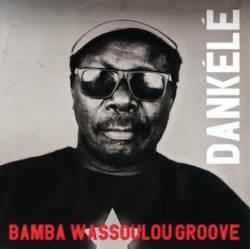
|
-
The word Wassoulou might put you in mind of the folksy but popular form of female-dominated Malian music (named for its region of origin) that Oumou Sangare and others brought to the world in the early '90s. But the all-guy Bamba Wassoulou Groove, formed in Bamako in 2013, salutes their country's musical roots in a more electrified manner. When early post-independence outfits like the Super Rail Band began bringing as many funk and rock influences as traditional twang to their plugged-in guitars, a new sound was born that swelled national pride and filled dance floors... BWG's triple guitar attack force creates a soaring wall of sound throughout Dankele, and it's a mighty one.
Tom Orr reviews.
|
|
|
-
I confess I was dubious. I guess it was the blurb for the album by Frenchman David Brossier and his group saying "Quintet Bumbac is a new vibe of Balkan melodies". No problem with musicians being influenced – we all are, and there's much to learn from Balkan music – but commitment to the tradition from somewhere else has to bring with it something more than just playing tunes from there. Well, there's so much in the music of the Balkans and their neighbors, Kurdish, Turkish, Klezmer and beyond to inspire musicians anywhere, and Bumbac draws on all of these and really does bring its own approach; this is no wannabe imitation. All the material on Miroirs is written by Brossier, who has deeply immersed in these musics, and it draws deep on the traditions to make luscious original music.
Read Andrew Cronshaw's full review and listen to their music.
Quintet Bumbac is our artist of the month in RootsWorld. Subscribe monthly or buy the CD and support RootsWorld.
|
|
|
-
After showing a precocious early talent on the trumpet, Dzambo Agusevi began leading his own band from when young, yet another of those young and fiery Balkan trumpet talents – his group won first place in the prestigious Guça band festival in 2011. Now he's matured, and as the title implies, he's aiming for a much broader acceptance for his band from Skopje in North Macedonia. Aguševi's eyes are definitely on the global prize.
The music on Brasses for the Masses is hot. Of course it is; this is a group packed with virtuosos, not least Aguševi himself. But in the Balkan brass world, if you don't sizzle, you go home. The difference here isn't in how well they play, but what they do with the music. Take the title cut, for instance. It kicks off the album in a powerful blast of very soulful horns that could have wandered over from a vintage Tower of Power recording session to explode on the track
Read Chris Nickson's review and hear some of the recording, and see a full concert from the Kennedy Center.
|
|
|
-
One of the women in Farafi comes from the US, the other from Britain, with French-Indian roots. Darlini Singh Kaul and Jot Tyson met in Goa in India, started singing together unaccompanied, found their voices and musical ideas clicked and decided to do more with it. Now they both live in Berlin, and after a pair of official bootlegs, this real debut does credit to their mix of percussion and singing, along with ngoni, kashaka, and ghungroos, and the duo often sing in languages which aren't theirs, mostly from Africa, as well as one of their own invention.
So far, so cultural imperialist, right? Well, not really. The music on Calico Soul might nod vaguely towards different cultures, but everything here is their own invention. While the heart of it all is just the pair of them, they actually sound at their best and most adventurous when accompanied by a full band, as on the opener, "Desert Sun," which quickly catches fire. There are plenty of African inflections, yet it still possesses something that's completely its own.
Read Chris Nickson's review and listen to some of the songs.
|
|
|
-
In the ever-expanding reissue campaign scouring Africa's 1970s golden age, attention has increasingly turned to the island nations considered part of the continent... So, it's not surprising the Bongo Joe label would finally bring us Léve Léve: Sao Tomé & Principe Sounds 70s-80s, an infectious collection of post-colonial grooves from the former Portuguese islands 240 or so kilometers off the coast of Gabon. These two sister islands were first founded and inhabited by all manner of European explorers, traders, bandits, and risky entrepreneurs late 15th and early 16th centuries, with slave labor brought in from the African mainland an inevitable outcome due to rich soil perfect for growing sugar cane. However, alongside the ugliness of that endeavor came music, in this case rhythms connected to other Portuguese colonies such as Angola, Mozambique, and Brazil. Independence finally arrived in 1975, but big dance bands had been active for over a decade prior, rooting their music in earlier theatrical and dance ensembles...
Bruce Miller takes you there to listen.
|
|
|
-
Seamus Egan is the kind of trailblazer that Irish music that breaks the chains of stereotyping. A multi-instrumentalist who's had a hand in soundtracks, symphonies and leading the renowned band Solas, Egan helped change many a listener's perception of Irish and Celtic music, bringing a broader reach of global influences including healthy dollops of Americana. Early Bright, the result of musical ideas that Egan has kept in his head for a long time and nurtured during his relocation from Philadelphia to rural Vermont, flows like 43 minutes of wordless melodic poetry. Each track features finessed but often-sprightly sounds on a variety of acoustic instruments, many of them (including banjo, nylon string guitar, mandolin and low whistles) played by Egan himself.
Read Tom Orr's review and listen to the music.
|
|
|
-
While Albaluna hail from Portugal, and Els Berros de la Cort from Catalonia in northeastern Spain, both bands share a similar philosophy towards music-making. Albaluna began a decade ago, with research into medieval instruments, tunes and songs from Portugal; in essence, the group were initiates into historical re-enactment. Fifteen years ago, Els Berros de la Cort also rooted themselves in arcane musical instrumentation and medieval street theater. Both bands have evolved in remarkable ways.
I would not describe either as a 'metal' band (although, in this latest iteration of Albaluna, the band leans on a lot of electricity), but rather as groups informed by how rock dynamics can be applied to acoustic, medieval instrumentation. We are faced with two paths…First, the brand of folk-rock that has seen ethnic instruments express a form of nationalism by drinking at the wellspring of folk song... The second path is a sound built around medieval music, particularly bagpipes and other wind instruments, undergird with percussion. Albaluna and Els Berros de la Cort remind me very much of the DIY ethos of the German medieval metal scene – with Els Berros de la Cort's sound especially being a direct descendent of Corvus Corax's experimentation.
Read more about these bands and hear their music in Lee Blackstone's review.
|
|
|
-
The title of Anne-Mari Kivimäki & Palomylly's Hämeen Laulaja, and the cover, which shows the three group members posing in traditional costume, might lead a record-shop browser (though shops for such browsing are sadly now rather fewer) to assume it's an album of traditional pelimanni music. Indeed its inspiration is the folk culture of Anne-Mari Kivimäki's home region of Häme in SW Finland, and the design is a tribute to that; as she puts it, "a sense of homeland and old stories". But the only wholly traditional song here is the short final track, the lullaby well-known in Finland. Some of the lyrics are traditional, but all the melodies are by Kivimäki, or made in conjunction with Palomylly bandmates, bassist/guitarist Ville Rauhala and Pekko Käppi, the latter renowned for his own projects that bring a metal/blues/grunge approach to the jouhikko (bowed lyre) but here also playing fiddle. Read Andrew Cronshaw's review and listen to some of the music and a video
|
|
|
-
Singer-songwriter Perrine Fifadji may be trilingual, but when listening to her latest, Une Goutte D'Eau, I cannot help but feel the presence of many languages besides. Her breath is the sound of soil, welcoming all seeds to share root space. The album's title song, "a drop of water" is sung in French and Lingala, a Congolese tongue that is her vehicle of choice and is the aphorism of an artist who sees herself as only she can: through the filter of lived experience. From that philosophical starting point emerges a wondrous sound, at once subterranean and stratospheric, inviting instruments as if they were destined to dance together. In each song, however joyful, there is a thread of mourning, paying respects to everyone who took their last breaths so that we might take our first.
Read Tyran Grillo's review and listen to some songs.
|
|
|
-
Live albums can create and cement an artist's reputation. When they manage to fully capture the intense, sweaty atmosphere of a gig, they're electrifying, as James Brown discovered decades ago. While the audience can make a live disc with their energy, sometimes their enthusiasm can be go over top – as it does here with the clapping out of time that opens this album from the Danish/Swedish quarter Bragr, recorded Live at Engelsholm Castle. It's unfortunate, but once it passes, the music really takes over and soars. It's certainly an ambitious gesture to record a live concert for your second release, but musically it pays off handsomely. Their debut was as a trio of fretless acoustic bass, percussion, and nyckelharpa/cister (a six-string lute). Since then they've added pianist Kristian Bisgaard, who proves an idea foil for Parry Stenbäck's strings. It gives the band more texture, and they have more instruments that can take the lead individually or play off each other. .. Hearing them live, it quickly becomes apparent that Bragr are actually jazz musicians in folk clothing. They use the largely original compositions as springboards for improvisation...
Read Chris Nickson's review and listen.
|
|
|
-
Joseph Shabalala, who introduced the sound of traditional Zulu and South African gospel music to the whole world, died February 11 at the age of 78. The musician was best known as the founder and director of Ladysmith Black Mambazo. I first heard the ensemble singing their gospel tinged Zulu music on a tape compilation in the early 1980s, then got their first US album (a Gallo recording reissued by Shanachie) and they became a regular part of my radio programs. Then of course, Paul Simon came along in 1986 and turned them into a phenomenon.
Some of their choices were dubious as they tried to hang on to popular fame, like a set of duets with singers like Dolly Parton, and the infamous Lifesavers commercials, but their pure a cappella music was always powerful and uplifting. Shabalala led the goup on numerous world tours until just a few years ago, and they never ceased to bring audiences to their feet with the genuine joy and zeal they brought to the music.
The national radio in South Africa sent him off with this:
"Ulale ngoxolo Tata ugqatso lwakho ulufezile."
(Rest in peace, Father, your race is complete.)
|
|
|
-
Somaliland has long been set apart, politically, from their Somali cousins. In the colonial era, the region was a British protectorate, while the rest of Somalia flew an Italian flag, and Somalilanders had their own nation for a brief, shining five days in 1960, before being absorbed into the newly independent Republic of Somalia. Sahra Halgan has been one of the strongest voices in the current struggle for independence, both as a musician and cultural activist. Her latest album, Was Dardaaran is the culmination of her journey so far. The album takes it's title from a polite form of address that Somalis use to speak to the powerful but don't mistake this for timidity on Halgan's part: this is a bold, brash, statement of a record that kicks down doors. Don't expect straight-ahead Somali music. Like her previous album, this is a multinational project with a hybrid sound that owes much of its sonic palette to Sahelian "Desert Rock." Don't expect delicately-picked ouds accompanied by stately sung poetry. Instead, think big, ballsy, distorted guitar riffs that build and repeat hypnotically, backed by a rocking backbeat and punctuated by call-and response choruses.
You can read a short history of the region and the artist in Tom Pryor's review.
|
|
|
-
Carmen Souza's latest album, The Silver Messengers, pays homage to jazz piano great Horace Silver. Silver was a touchstone in the hard bop era of the 50s and 60s, joining the likes of Les McCann, Cannonball Adderley and Charles Mingus; among other innovations, hard bop incorporated the rhythms and the feeling of R&B and soul into the jazz canon. Souza and Silver's roots both lie in Cabo Verde, the island conglomerate far off the coast of Sénégal in the Atlantic. Souza's beat, so to speak, is jazz; she has ten CD releases under her belt, primarily as a vocalist with a predilection for scat singing, but she's also a composer, guitarist and keyboardist. Souza's partnership with bassist, arranger and producer Theo Pascal, beginning in 2003, has been fruitful and her star is rising, especially in Europe. Drummer/percussionist Elias Kacomanolis, and pianist Benjamin Burrell round out her current quartet.
Read Carolina Amoruso's full review, and listen to some songs from Carmen Souza and the band, as well as Horace Silver's original recordings of the songs.
|
|
|
-
Finnish singer and composer Emmi Kujanpää has a deep, long-standing love of Bulgarian music. She studied in Plovdiv and at home she assembled the group Finno-Balkan Voices, which takes from the tradition of both countries. Three years ago she began working with La Mystère des Voix Bulgares Vocal Academy, the successor to those Bulgarian choirs whose beautiful polyphony was so thrilling and new to Western ears in the 1980s and '90s. They pop up all across this first solo disc from Kujanpää, backing and adding to her singing. Other guest contribute trumpet, harmonium, and even a touch of throat singing, on the (mostly) original compositions.
Read Chris Nickson's review and hear some of the music
|
|
-
Part of the magic conjured up by the always entertaining Hazmat Modine is that the New York-based group's music seems instantly familiar, yet that familiarity quickly gives way to a realization that there are some unexpected exotic threads woven throughout the intricate tapestry of the songs. As it has on past albums, the group continues to have a retro blues-jazz feel, but the music never sits in one genre too firmly. One of the consistent hallmarks of the group has been its collaborations with musicians from other countries – this time it's Malian-born Balla Kouyate playing the wooden marimba-like balafon, keeping pace amid the galloping brass, drums and electric instruments... One common theme throughout Hazmat Modine's career has been the gathering of highly talented instrumentalists who serve each song in precise arrangements, then are given liberty to step out for eye-opening runs, as they do on the band's latest recording, Box of Breath.
Read Marty Lipp's review and listen to some of the music
|
Support RootsWorld. Subscribe to Music of the Month.
|
|
-
Manhu are from the Stone Forest region of Yunnan Province in Southwest China, home of the Sani people. The Sani have lived in this region for many years, probably going back as far as the Qing Dynasty (1600s), The Chinese government categorizes them as part of a large combined ethnic group called Yi, even though the Sani have maintained a strong and unique linguistic and cultural presence in the region for all of that time. On Voices Of The Sani, the quintet explores the tradition of their own people, but acknowledges the cross hybridization of the many cultures who share the region. They also clearly want to make the music live in the present, as you can hear in many of the songs on the album. They even dip into the global with their own Sani rendition of an old American mountain tune they call "Brothers and Sisters." - CF
Listen to some of the music
|
|
|
-
IN…SE… -dawning- is an opera by Cypriot composer Andys Skordis. Sharing as much affinity with the “Licht” cycle of Karlheinz Stockhausen as with the Balinese traditions from which it absorbs so much atmospheric wonder, Skordis’s interdisciplinary experience weaves gamelan, voices, and dance into a constantly morphing whole. Recasting the tale of Prince Bima and his quest for holy water (from the Mahabharata), the libretto overlays Bima’s transfigurations with those of a modern woman named Ida, whose sense of oppression compels her to embark on a fiercely inner journey of her own.
Listen to or watch the opera and read Tyran Grillo's full review.
|
|
|
-
Hrubá Hudba glorious, beautifully mysterious music, soaringly uplifting but also evoking deep historical melancholy and a vision of the richness of Central European folk music in general and in particular that of the small region Hornácko in Moravia’s Hodonin district. It’s in the south-east of the Czech Republic, close to both the Slovak and Austrian borders, roughly midway in the 130 Km between between label Indies’s Moravian base Brno and Slovak capital Bratislava. Cultures don’t stop at borders, so there’s a lot of kinship between this music and that of Slovakia.
It’s a double CD. On the first, Rugged Music, are Jirí Hradil’s treatments of studio and field recordings he’s made of songs from a variety of male and female traditional singers, with the instruments of his fiddler colleague Petr Micka‘s Hornácko Band, the sort of string band that still plays at village events in Moravia and Slovakia... The second, Voices From The World Of Old, doesn’t have Hradil's developments, but is lovely in its own right. Traditional singers are accompanied by members of Petr Micka‘s Hornácko Band.
Read Andrew Cronshaw's full review and listen to some of the music
|
|
|
-
Two new releases serve as a fantastic reminder of the kinds of ethnomusicological benevolence that’s opened up thanks to the low cost of digital field recordings as well as streaming platforms. Russia-based Antonovka records’ mission statement is simple: “We are agile and low cost ethnographic music label.” There are no physical copies of any of their recordings, though they stream via bandcamp, where digital downloads can also be purchased.
Read Bruce Miller's reviews of ngombi harp player Jospin Pendere-Ye from Central African Republic and The Asif Zaman Band from Northern Pakistan.
|
|
|
-
On Dziemas No Aulejas - Songs From Auleja, the six women who make up Tautumeitas give their own take on a particular strand of Latvian traditional music. It’s an homage to the singing of Aulejas Sievas (Women from Auleja), who come from a single village in the eastern Latgale part of the country and have been keepers of one of their country’s oldest vocal traditions – one that differs markedly from elsewhere in Latvia in both its melodic style and the type of harmony... Tautumeitas member Asnate Rancãne studied the music of Auleja in depth for her degree dissertation, making field recordings, talking to villagers and singers. One thing she needed to do to obtain her degree was put on a concert of the music – an event which first brought together several members of Tautumeitas. So, in some ways, their own roots lie in this music. too... The nature of it is that this is decidedly niche, but by God, it’s powerful and invigorating.
Read Chris Nickson's full review and listen to some of the music.
|
|
|
-
To listen to The Good Ones is to experience the redemption that follows heartbreak. There’s a slight creak in the harmony vocals, a sense of the forlorn in the acoustic guitars. Rwanda, You Should Be Loved presents music of endless depth, something that bears witness to not only tragedy but the hope that follows. And because the lyrics are sung in various dialects not widely spoken, it’s easy to imagine the lyrics telling of hard won battles, sufferings overcome, obscure pathways to enlightenment, or long lost, forbidden lovers reunited after years of anguish. In short, it’s probably some of the most beautiful music to emerge from Rwanda...
Listen to a few of the songs and read Bruce Miller's review.
|
|
|
-
Two new bands from Denmark have similar personnel and a common factor, but quite different approaches to music. Penny Pascal boast two fiddles, cittern and bass, and state that they’re a band where “rules, conventions and comfort zones do not apply.” Their digital-only release Grand Voyager, is a step outside music that might be termed folk.
One of the violin players in Penny Pascal is Henriette Ambæl Flach, who recently won New Talent of the Year in the Danish Music Awards. She is also a member of Tailcoat, bringing her fiddle and hardingfele to work alongside cittern, bass, percussion and nyckelharpa on a selection of original compositions that comprise Tall Tales In Tiny Pieces... You can read Chris Nickson's reviews, hear some songs and watch a video of each ensemble online.
|
|
|
-
While the British Protestant tradition sees hymns come as complete entities, with specially-composed words and music, in the Nordic countries they do things a little differently. There’s a long history of mixing the hymn words with folk tunes. It makes sense: the tunes were simple and memorable, people already knew them, and they’d be likely to take up the new words (the oldest text dates from 1572, just to give you an idea). It’s this history mingling folk and church that Phønix jump into on this new album and they do it with glee on their new release, Hvad Intet Øre Hørte End. Hear the music and read Chris Nickson's review.
|
Read more reviews from
2021
2019
2018
2017
2016
We Interupt Our Regularly Scheduled Magazine For This Important Announcement.
RootsWorld cannot survive without the support of our readers. If you want to hear great music and read great writers, then we need each listener and reader to contribute just a little to make it happen. Please join us!
Make a One Time Contribution Today!
|
$5.00
|
$10.00
|
$20.00
|
|
$40.00
|
$70.00
|
$100.00
|
Please contribute to our survival.
About RootsWorld: RootsWorld is a world music magazine started in 1993, pretty much at the dawn of the term "world music" as well as the pre-dawn of internet publishing (I suspect this was the first music magazine of any sort published on the www). Our focus is the music of the world: Africa, Asia, Europe, Pacifica and The Americas, the roots of the global musical milieu that has come to be known as world music, be it traditional folk music, jazz, rock or some hybrid. How is that defined? I don't know and don't particularly care at this point: it's music from someplace you aren't, music with roots, music of the world and for the world. OK?
All pages at RootsWorld are © 1992-2020 RootsWorld/ Cliff Furnald / FNI Multimedia Publishing, New Haven CT
The RootsWorld name is protected by US trademark law.
All picture and sound images are the property of the artists and record labels, and are protected by copyright. No file or part of a file may be used for any purpose, commercial or non-commercial, without the express written consent of RootsWorld or the other copyright owners.
About the use of sound files and copyright protections at RootsWorld
|
